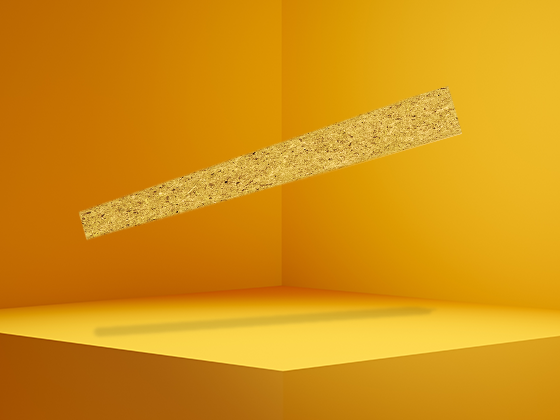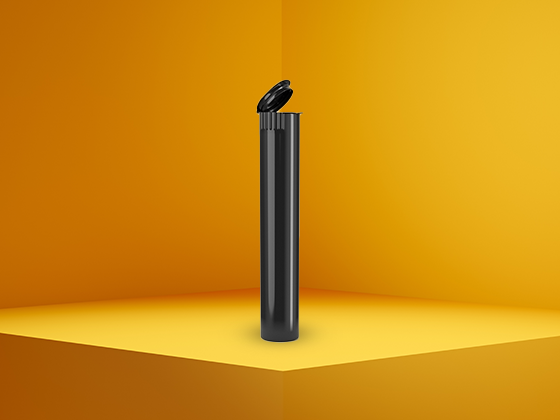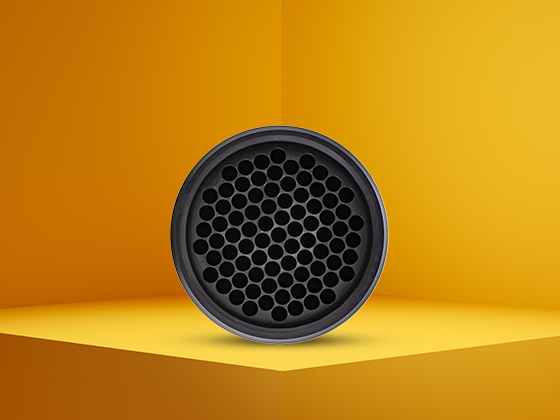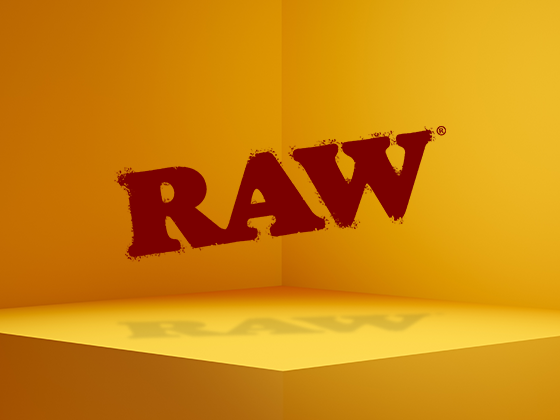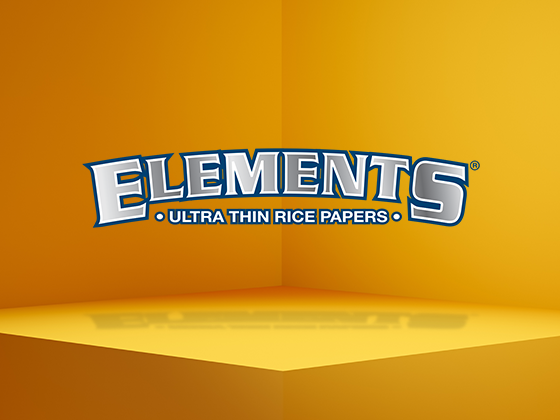Resources
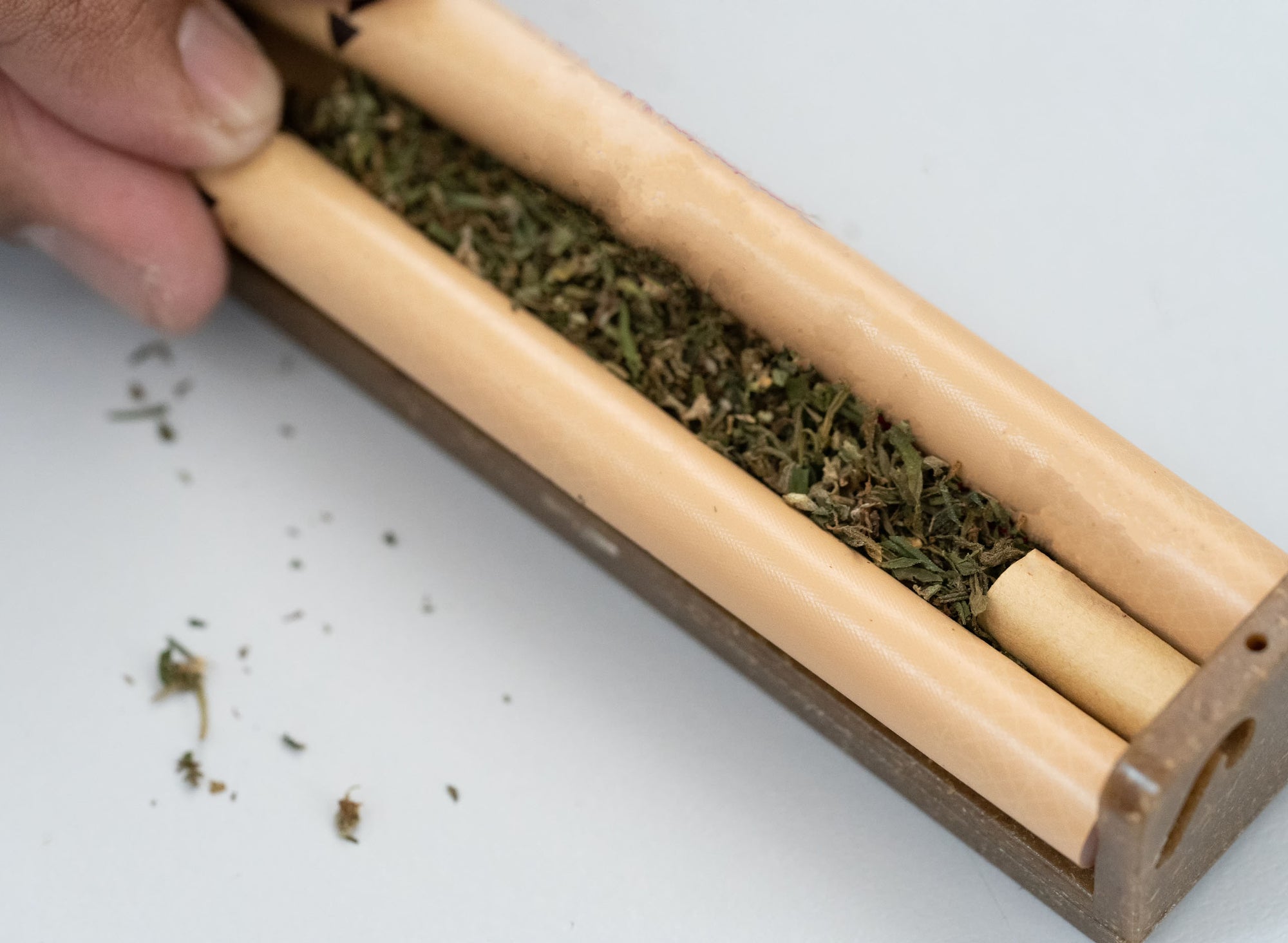
business tips
Effortless Smoking: A Guide to RAW Cone Filling Machines and Manual Techniques
Table of Contents
Understanding RAW Cones and Their Appeal
Manual Filling Techniques: How to Fill a RAW Cone by Hand
RAW Cone Filling Machines: Types and Benefits
Choosing the Right Cone Filler for Your Needs
Tips for Achieving Perfectly Packed Cones
The Future of Cone Filling Technology
Effortless Smoking: A Guide to RAW Cone Filling Machines and Manual TechniquesPre-rolled cones have revolutionized the smoking experience by eliminating the need for hand-rolling skills. Among these, RAW cones stand out for their natural materials and consistent quality. However, filling these cones efficiently requires either skilled manual techniques or specialized equipment. This comprehensive guide explores both RAW cone filling machines and hand-filling methods to help you achieve perfectly packed pre-rolls every time.Understanding RAW Cones and Their AppealRAW cones are pre-rolled paper cones made from unbleached, natural fibers. Their popularity stems from their organic composition, slow burn rate, and minimal impact on flavor. According to our guide on RAW pre-rolled cones, these products come in various sizes from single-serving to party-sized options.Before diving into filling techniques, it's important to understand the anatomy of a RAW cone:
The wide opening (top) where material is inserted
The paper tube that narrows toward the tip
The filter tip or crutch at the narrow end
The packing tool often included with RAW products
Manual Filling Techniques: How to Fill a RAW Cone by HandLearning how to fill a RAW cone by hand is a fundamental skill for any smoker. The process is straightforward but requires patience and practice to master.Step-by-Step Manual Filling Process1. Preparation: Grind your material to a medium consistency for optimal burning.2. Loading: Hold the cone vertically with the filter tip down. Gradually add material into the wide opening.3. Packing: After adding small amounts, gently tap the cone on a flat surface or use the packing tool to compress the material. Avoid packing too tightly near the filter.4. Finishing: Once filled to your desired level, twist the excess paper at the top to seal.For more detailed instructions on manual packing techniques, our complete guide to packing RAW cones offers valuable insights.RAW Cone Filling Machines: Types and BenefitsFor those seeking efficiency or dealing with larger volumes, a RAW cone filling machine offers significant advantages. These devices range from simple manual assistants to sophisticated electric models.Types of RAW Cone Fillers1. RAW Cone Loader: A basic plastic device that holds the cone upright while you fill it.2. RAW Cone Filler: A step up from the loader, this device allows you to place your material in a chamber and then slide it into multiple cones simultaneously.3. RAW Cone Filling Machine: More advanced models that can fill multiple cones with minimal effort, ideal for small businesses or frequent users.4. Electric RAW Cone Packing Machine: Commercial-grade equipment for high-volume production.Highlight: A quality RAW cone filler machine can increase production speed by up to 500% compared to manual filling, while maintaining consistent density throughout each cone.Choosing the Right Cone Filler for Your NeedsSelecting the appropriate RAW cone filling machine depends on your volume requirements, budget, and desired level of automation.Factors to Consider1. Volume: How many cones do you need to fill regularly?2. Speed: Is time efficiency a priority?3. Consistency: Do you need perfectly uniform cones every time?4. Budget: Professional-grade equipment costs more but offers better results.For occasional users, a simple RAW cone filler provides a good balance of affordability and functionality. For those looking for alternatives, our premium Hara Cones collection offers compatible options that work seamlessly with most RAW filling devices while providing unique characteristics.Tips for Achieving Perfectly Packed ConesWhether using a RAW cone filling machine or packing by hand, these tips will help you achieve optimal results:
Material Consistency: Ensure your material is ground to a medium consistency, not too fine or too coarse.
Layered Packing: Add material in stages, packing gently between additions.
Density Gradient: Pack more loosely near the filter and more firmly toward the top.
Humidity Control: Store cones in a controlled environment to prevent them from drying out or becoming too moist.
Machine Maintenance: Keep your RAW cone packing machine clean for consistent performance.
For more specialized techniques and tools, our article on mastering RAW cone rolling tools provides advanced insights.The Future of Cone Filling TechnologyAs the market for pre-rolled products expands, cone filling technology continues to evolve. Newer RAW cone filling machines incorporate features like:
Precision weight sensors for exact filling amounts
Automated tamping systems for perfect density
Multi-cone processing capabilities
Integration with grinding equipment
Smartphone connectivity for operation monitoring
These advancements make RAW cone filler machines increasingly attractive for both personal users and small businesses looking to scale their operations efficiently.Whether you choose the traditional satisfaction of hand-filling or the convenience of a RAW cone filling machine, the perfect pre-roll is within reach. For those interested in exploring the full range of options, our comprehensive RAW cones collection offers everything from basic cones to advanced filling equipment.

flower
Step-by-Step Guide to Crafting Paper Cones
Table of Contents
Materials Needed for Crafting Paper Cones
Basic Cone Rolling Technique
Advanced Techniques for Perfect Cones
Troubleshooting Common Issues
Filling Your Handcrafted Cones
Paper Alternatives and Considerations
Mastering the Cone Craft: Practice Makes Perfect
Learning how to make cones out of paper is a valuable skill for both recreational and practical purposes. Whether you're looking to create a vehicle for your favorite herbs or simply want to master a useful paper-folding technique, this comprehensive guide will walk you through the process from start to finish.Materials Needed for Crafting Paper ConesBefore diving into the rolling process, gathering the right materials is essential for success:
Rolling papers (preferably thin and flexible)
Filter tips or thin cardboard for creating crutches
Scissors for trimming
A pen or pencil for shaping (optional)
A flat, clean surface for rolling
Patience and steady hands
The quality of your materials directly impacts the final product. While specialized rolling papers are ideal, in a pinch, thin printer paper can work for practicing the technique. For those looking to store their herbs after rolling, quality container lids and caps can help maintain freshness and comply with storage regulations.Basic Cone Rolling TechniqueStep 1: Prepare Your Filter TipStart by creating a filter tip (also called a crutch or tip):
Take a small piece of thin cardboard or a filter tip
Fold a small portion back and forth in an accordion pattern
Roll the remaining cardboard around this accordion section
This creates a W or M shape inside a circle that prevents material from passing through
Step 2: Position Your PaperPlace your rolling paper on a flat surface with the adhesive strip facing up and positioned away from you (typically along the top edge).Step 3: Form the Cone ShapeThis is the critical step in learning how to roll a cone out of paper:
Place your filter tip at one end of the paper
Hold the paper between your thumb and index finger of both hands
Begin rolling the non-adhesive side into the adhesive side
Create a gradual taper by positioning your fingers at slightly different heights
The end with the filter should be narrower than the opposite end
Highlight: The key to a perfect cone is creating a gradual taper from the filter end to the tip. This requires adjusting finger position and pressure as you roll.As noted in our guide on mastering cone spliffs, the taper should be gradual and even for optimal results.Advanced Techniques for Perfect ConesThe Pencil MethodFor beginners struggling with hand-rolling:
Wrap your paper around a pencil or pen with the adhesive strip facing inward
Start with the pencil tip slightly exposed at the narrow end
Lick the adhesive strip and seal the cone
Carefully slide the cone off the pencil
Insert your filter at the narrow end
The Fold-and-Roll MethodThis technique offers more control:
Fold your paper in half lengthwise (without creasing firmly)
Place your filter at one end
Roll from the filter end, gradually creating a widening cone shape
Lick and seal when the shape is perfect
According to our complete guide on using and filling cones, this method provides excellent control over the cone's angle and taper.Troubleshooting Common IssuesEven experienced rollers encounter challenges. Here's how to address common problems:Cone Too Loose
Use more pressure when rolling
Try using a smaller piece of paper
Consider double-wrapping for additional structure
Uneven Burning
Ensure your cone is evenly packed
Check for air pockets and eliminate them
Make sure the paper is evenly moistened when sealing
Filter Falls Out
Make the filter slightly larger
Ensure it's tightly secured in the narrow end
Consider using a filter with slight expansion properties
Filling Your Handcrafted ConesOnce you've mastered how to make cones out of paper, filling them properly is equally important:
Hold the cone vertically with the wider opening facing up
Use a small funnel or card to guide material into the cone
Tap gently to settle material as you fill
Use a packing tool to ensure even density
Avoid overpacking, which restricts airflow
For detailed instructions on filling techniques, refer to our step-by-step guide to filling pre-rolled cones.Paper Alternatives and ConsiderationsWhile learning how to roll a cone out of paper typically involves rolling papers, other options exist:
Hemp papers: Eco-friendly with minimal processing
Rice papers: Ultra-thin for minimal paper taste
Flavored papers: Add subtle taste notes
Organic papers: Free from chemicals and bleaching agents
Each material affects burn rate, flavor, and structural integrity. Experiment to find your preference, as suggested in our guide to the best pre-rolled cones and accessories.Mastering the Cone Craft: Practice Makes PerfectBecoming proficient at making paper cones requires practice and patience. Start with larger papers which are easier to manipulate, then progress to standard sizes as your skills improve. Remember that even experienced rollers occasionally produce imperfect cones.For those who prefer convenience, pre-rolled cones are widely available. However, learning how to make cones out of paper is a skill that offers customization options and satisfaction that pre-made alternatives can't match.Whether you're crafting cones for personal use or sharing your skills with friends, the techniques outlined in this guide provide a foundation for creating perfect paper cones every time. With practice, your fingers will develop muscle memory, making the process increasingly intuitive and enjoyable.

flower
Understanding Pre-Rolls: What They Are and Their Effects
Table of Contents
What Are Pre-Rolls: The Basics
Pre-Roll Ingredients and Quality Considerations
Effects and Potency: Do Pre-Rolls Get You High?
THCA Pre-Rolls: Understanding the Difference
Consumption Tips and Best Practices
Future Market Trends and Product Evolution
Pre-rolls have become increasingly popular in the cannabis market, offering convenience and accessibility to both new and experienced consumers. Despite their prevalence, many still wonder: what is a pre-roll weed product exactly, and how does it compare to other consumption methods? This comprehensive guide addresses common questions about pre-rolls, their ingredients, effects, and best practices for consumption.What Are Pre-Rolls: The BasicsPre-rolls are ready-to-smoke cannabis products that eliminate the need for manual rolling. In their most basic form, pre-rolls are cannabis flower ground up and rolled into a paper cone or tube, often with a filter or crutch at one end. They come in various sizes, from small 0.5-gram joints to larger 1-gram or even multi-gram options as detailed in this guide on pre-roll weights.The main appeal of pre-rolls is convenience. Rather than purchasing flower, grinders, papers, and filters separately, consumers can simply buy a finished product ready for immediate use. This accessibility makes pre-rolls particularly popular among cannabis newcomers or those who lack rolling skills.Pre-Roll Ingredients and Quality ConsiderationsA common question among consumers is: are pre-rolls real weed? The answer is yes, pre-rolls contain actual cannabis flower. However, quality can vary significantly between products and manufacturers.What's Inside a Pre-Roll?
Cannabis flower (the primary ingredient)
Rolling paper (may be made from hemp, rice, or other materials)
Filter tip or crutch (typically cardboard)
Sometimes additional ingredients like concentrates or kief for enhanced potency
Quality pre-rolls use properly cured, fresh cannabis flower from specific strains. However, some lower-quality options might contain trim, shake, or even plant material that wouldn't typically be sold as premium flower. For businesses looking to create premium pre-rolls, our selection of custom cones provides various options to enhance product presentation and quality consistency.Highlight: While all legitimate pre-rolls contain real cannabis, quality varies widely. Premium pre-rolls use specific strains and flower parts, while budget options may contain trim or shake.Effects and Potency: Do Pre-Rolls Get You High?Yes, pre-rolls containing THC-rich cannabis will produce psychoactive effects. The intensity and nature of these effects depend on several factors:Factors Affecting Pre-Roll Potency
Cannabis strain used (indica, sativa, or hybrid)
THC percentage and cannabinoid profile
Presence of additional concentrates (infused pre-rolls)
Freshness and quality of the cannabis
Individual tolerance and metabolism
Pre-rolls can deliver effects comparable to other consumption methods using the same strain and quality of cannabis. For those new to cannabis or returning after a long break, proper consumption techniques can help manage the experience and avoid overconsumption.THCA Pre-Rolls: Understanding the DifferenceA growing segment of the market includes THCA pre-rolls. THCA (tetrahydrocannabinolic acid) is the non-psychoactive precursor to THC found in raw cannabis. When heated through smoking, THCA converts to THC through a process called decarboxylation.Do THCA pre-rolls get you high? Yes, when smoked, the heat converts THCA to THC, producing psychoactive effects. However, if consumed raw (which is not the intended use), THCA would not produce intoxicating effects. This distinction has created some regulatory gray areas in certain markets where THCA products might be available while THC products remain restricted.Consumption Tips and Best PracticesTo get the most from pre-rolls while ensuring a safe experience, consider these guidelines:
Start slow, especially with high-potency products
Store properly in airtight containers to maintain freshness
Light evenly around the circumference for an even burn
Consider using a pre-roll holder to avoid stained fingers
Be aware of local regulations when traveling with pre-rolls
For those experiencing issues like uneven burning or canoeing, these troubleshooting techniques can help salvage the experience and improve future sessions.Future Market Trends and Product EvolutionThe pre-roll market continues to evolve with several notable trends emerging:
Increased focus on strain-specific and single-origin pre-rolls
Growth in infused products combining flower with concentrates
Development of specialized papers and filters for enhanced experiences
Expanded variety in size options from micro-rolls to shareable multi-gram products
Improved packaging for better preservation of terpenes and potency
As consumer sophistication grows, the distinction between mass-produced and craft pre-rolls is becoming more pronounced. Premium pre-rolls increasingly feature information about cultivation methods, harvest dates, and complete terpene profiles, similar to how craft beer and wine markets have evolved.Whether you're a curious newcomer wondering what pre-rolls are or an experienced consumer exploring different options, understanding the fundamentals of these products helps ensure a more satisfying and predictable experience. From basic flower pre-rolls to specialized infused products, this convenient format continues to represent one of the most accessible entry points to cannabis consumption.
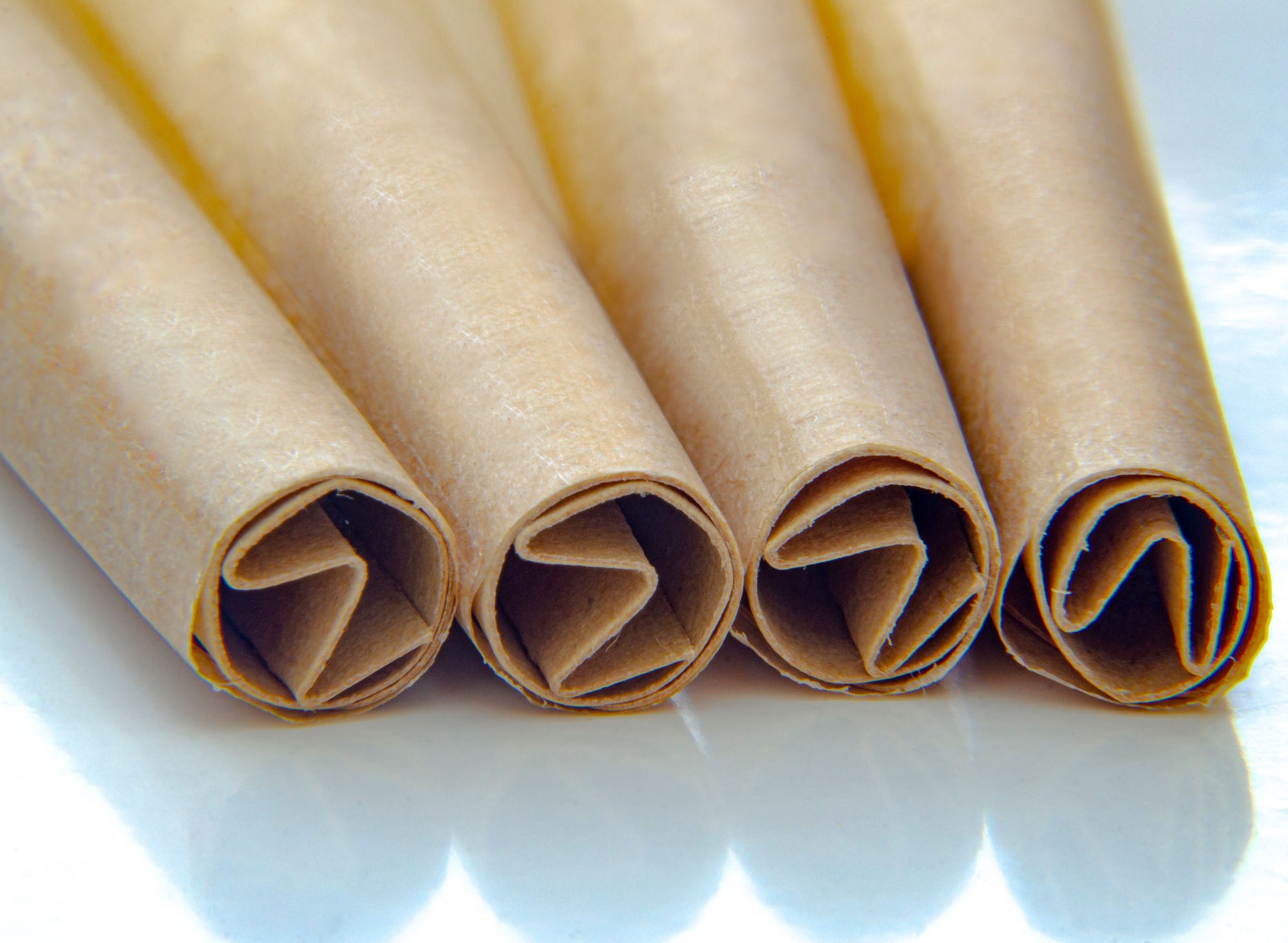
flower
A Comprehensive Guide to RAW Rolling Tips and Pre-Rolled Options
Table of Contents
Understanding RAW Rolling Tips: Materials and Quality
Pre-Rolled Convenience: RAW Tips Ready to Use
Wide Tips Benefits: Why Size Matters
Rolling Techniques: Mastering the Perfect Roll
Setup and Accessories: Enhancing Your Rolling Experience
Sustainability Practices: RAW's Eco-Friendly Approach
A Comprehensive Guide to RAW Rolling Tips and Pre-Rolled OptionsRAW rolling tips have revolutionized the smoking experience for enthusiasts worldwide. These small yet crucial accessories provide structure, stability, and improved airflow when rolling. Whether you prefer traditional manual rolling or opt for the convenience of RAW tips pre-rolled, understanding the options available can significantly enhance your smoking sessions.Understanding RAW Rolling Tips: Materials and QualityRAW rolling tips are crafted from unrefined, chlorine-free paper that maintains the brand's commitment to natural products. The unbleached, chemical-free construction ensures that no unwanted flavors interfere with your smoking experience. These tips are designed to be sturdy enough to maintain their shape while providing optimal airflow.The standard RAW tips come in booklets containing approximately 50 perforated strips that can be easily torn off and fashioned into filters. Each tip features strategic perforations that help create consistent accordion folds for proper filtration.Material DifferencesUnlike cheaper alternatives, RAW uses natural, unbleached paper that contains no chemicals or additives. This commitment to purity is evident in the light brown color of their tips, reflecting the natural state of the paper. As explained in our comprehensive guide to RAW tips and accessories, this quality difference is immediately noticeable to experienced users.Pre-Rolled Convenience: RAW Tips Ready to UseFor those seeking convenience, RAW tips pre-rolled offer an excellent solution. These ready-to-use filters save time and ensure consistency in your rolling experience. Pre-rolled tips maintain the same high-quality standards as their DIY counterparts but eliminate the folding step.Available in various quantities, pre-rolled RAW tips typically come in packages of 20, 100, or bulk options for frequent users. The consistent diameter and length of these pre-rolled options provide predictable performance every time.Advantages of Pre-Rolled Options
Time-saving convenience for quick preparation
Consistent size and shape for reliable performance
Perfect for beginners still mastering rolling techniques
Ideal for situations where manual dexterity might be limited
Less waste from improperly folded tips
As detailed in our guide to RAW pre-rolls, these convenient options maintain the brand's commitment to quality while adding significant convenience.Highlight: RAW pre-rolled tips provide consistent performance while saving valuable preparation time, making them perfect for both beginners and experienced enthusiasts seeking convenience.Wide Tips Benefits: Why Size MattersRAW offers various tip sizes, with their extra-wide options gaining popularity among many users. These wider tips provide several advantages over standard sizes, particularly for those who prefer a more substantial mouthpiece or enhanced filtration.The extra surface area of wide tips creates more effective filtration by providing additional material to catch particulates. This can result in a smoother smoking experience with less harshness. Additionally, the benefits of RAW extra-wide tips include improved structural stability and easier handling during the rolling process.Perforated Wide TipsRAW's perforated wide tips offer the perfect balance between customization and convenience. These wider tips feature the same quality perforations as standard options but provide additional width for those who prefer it. The perforations guide folding while still allowing users to adjust the tightness and pattern to their preferences.As explored in our article on RAW perforated wide tips, these options have become increasingly popular among enthusiasts looking to perfect their rolling technique.Rolling Techniques: Mastering the Perfect RollWhether using standard or pre-rolled RAW tips, proper technique is essential for an optimal smoking experience. The tip should be placed at one end of your rolling paper before adding your preferred smoking material. This provides structure and prevents material from being drawn through during use.For manual rolling with flat RAW tips, creating an accordion or spiral fold is the most common approach. This involves making several alternating folds to create a "W" or "M" shape when viewed from the end. This structure provides excellent filtration while maintaining proper airflow.Machine AssistanceFor those who struggle with manual rolling, RAW offers rolling machines that work perfectly with their tips. These devices help create uniform rolls with proper tip placement. Our guide to using a RAW rolling machine provides detailed instructions for achieving perfect results every time.Combining the right rolling technique with quality RAW tips creates an optimal smoking experience with improved airflow, reduced harshness, and structural integrity. As detailed in our comprehensive rolling guide, mastering these techniques takes practice but yields superior results.Setup and Accessories: Enhancing Your Rolling ExperienceCreating the ideal rolling environment involves more than just quality tips. A proper setup with the right accessories can significantly improve efficiency and results. Among the most essential accessories are quality rolling trays, which provide a clean, contained surface for preparation.Our collection of premium rolling trays offers various sizes and designs to accommodate different preferences and needs. These trays feature raised edges to prevent material loss and smooth surfaces that make the rolling process more manageable.Additional accessories that complement RAW rolling tips include:
Storage containers for keeping tips dry and clean
Tip holders for organizing pre-rolled options
Rolling mats for added surface protection
Packing tools for ensuring proper density
The right combination of accessories creates an efficient workflow that enhances the rolling experience while maintaining the quality that RAW products are known for.Sustainability Practices: RAW's Eco-Friendly ApproachOne of the distinguishing characteristics of RAW products, including their rolling tips, is the brand's commitment to sustainability and environmental responsibility. RAW uses unbleached, unrefined paper that requires fewer chemicals and processing than conventional alternatives.This eco-friendly approach extends to their packaging, which often uses recycled materials and minimalist designs to reduce waste. For environmentally conscious consumers, this commitment to sustainability provides added value beyond the product's performance.By choosing RAW rolling tips or pre-rolled options, users support a brand that prioritizes environmental responsibility while enjoying a superior product. This combination of quality, performance, and values has contributed significantly to RAW's enduring popularity in the market.Whether you prefer the customization of standard RAW rolling tips or the convenience of pre-rolled options, these quality accessories enhance the smoking experience through improved filtration, structure, and airflow. With proper technique and the right supporting accessories, RAW tips help create a superior experience that showcases why they've become the industry standard for discerning enthusiasts.
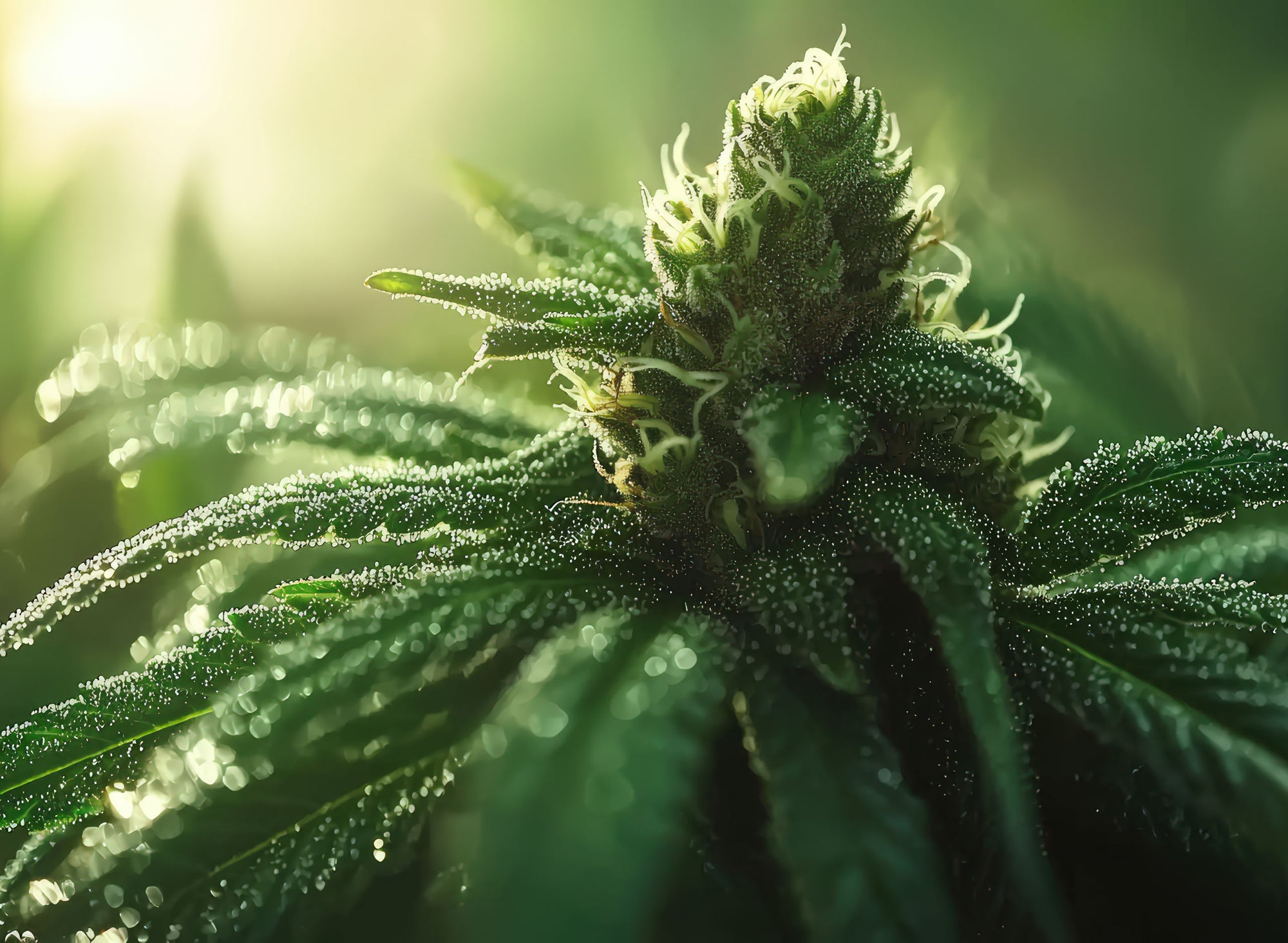
branding
Exploring RAW Filters: A Comprehensive Guide to Enhancing Your Photography
Table of Contents
Understanding RAW Filters: The Foundation of Advanced Photography
Benefits of RAW Filters for Image Quality
Types of RAW Filters and Their Applications
The RAW Filter Book: Essential Resource for Photographers
Integrating RAW Filters into Your Photography Workflow
The Future of RAW Filtering: Innovations and Emerging Techniques
nnExploring RAW Filters: A Comprehensive Guide to Enhancing Your PhotographynnPhotography enthusiasts and professionals alike understand the importance of capturing images in RAW format to preserve maximum detail and editing flexibility. However, many photographers are now discovering the additional benefits of applying RAW filters to further enhance their creative capabilities and image quality. This comprehensive guide explores everything you need to know about RAW filters and how they can transform your photographic workflow.nnUnderstanding RAW Filters: The Foundation of Advanced PhotographynnRAW filters represent a specialized approach to image processing that works directly with uncompressed RAW data before conversion to standard formats like JPEG or PNG. Unlike traditional post-processing filters applied after conversion, RAW filters interact with the original sensor data, preserving all the information captured by your camera.nnWhen working with RAW with filters, photographers gain access to the full dynamic range and color depth of their images. This approach allows for non-destructive editing and greater control over the final output. The concept has gained significant traction among photographers seeking to maximize image quality while maintaining an efficient workflow.nnBenefits of RAW Filters for Image QualitynnEnhanced Dynamic RangennOne of the primary advantages of using RAW filters is the ability to recover details in highlights and shadows that might otherwise be lost. By applying specialized filters to RAW data, photographers can extend the effective dynamic range of their images, creating more balanced and visually appealing results.nnPrecise Color ControlnnRAW filters enable photographers to adjust color temperature, tint, and saturation with unprecedented precision. This level of control is particularly valuable for achieving consistent color grading across a series of images or matching specific color palettes for commercial work.nnNoise Reduction and SharpeningnnAdvanced RAW filter techniques can significantly improve noise reduction while preserving detail. Similarly, sharpening algorithms applied at the RAW level tend to produce more natural-looking results with fewer artifacts compared to post-conversion sharpening.nnnWhen selecting materials for your photography toolkit, consider exploring our premium collection of specialized accessories that complement advanced image processing techniques and help maintain quality throughout your workflow.nnnTypes of RAW Filters and Their ApplicationsnnRAW filters come in various forms, each designed for specific photographic scenarios and artistic goals:nnn
Lens Correction Filters: Compensate for optical distortions, vignetting, and chromatic aberration inherent to specific lensesn
Noise Reduction Filters: Intelligently reduce noise while preserving detail, especially useful for high-ISO photographyn
Creative Color Filters: Simulate film stocks or create unique color grading styles directly from RAW datan
Dynamic Range Optimization: Balance exposure across challenging lighting conditionsn
Detail Enhancement: Bring out texture and fine details without introducing artifactsnnnUnderstanding which filter RAW processing technique to apply depends on both technical requirements and creative vision. Many photographers develop signature styles based on their preferred combination of RAW filters.nnThe RAW Filter Book: Essential Resource for PhotographersnnFor those looking to deepen their understanding of RAW filtering techniques, the RAW filter book has become an indispensable resource. This comprehensive guide covers everything from basic concepts to advanced applications, making it suitable for photographers at all skill levels.nnThe RAW book filter approach provides structured learning with practical examples and step-by-step instructions. Many photographers report significant improvements in their work after studying and applying the techniques outlined in these specialized publications. Similar to comprehensive guides on other RAW techniques, these resources offer valuable insights into maximizing your photographic potential.nnIntegrating RAW Filters into Your Photography WorkflownnSuccessfully incorporating RAW filters into your existing workflow requires thoughtful planning and organization:nnSoftware ConsiderationsnnSeveral professional-grade applications support advanced RAW filtering, including Adobe Camera Raw, Capture One, DxO PhotoLab, and Luminar. Each offers unique strengths in how they handle RAW data and apply filters. Many photographers use a combination of tools to achieve their desired results, similar to how they might combine different elements in other creative processes.nnCreating Presets and TemplatesnnTo maximize efficiency, develop custom presets for frequently used RAW filter combinations. This approach streamlines editing while maintaining consistency across projects. Well-designed presets can significantly reduce post-processing time without sacrificing quality or creative control.nnBatch Processing StrategiesnnFor photographers handling large volumes of images, batch processing with RAW filters requires careful planning. Consider developing specialized workflows for different types of photography, from landscapes to portraits, each with optimized filter settings for the subject matter.nnThe Future of RAW Filtering: Innovations and Emerging TechniquesnnThe field of RAW filtering continues to evolve rapidly, with several exciting developments on the horizon. Artificial intelligence and machine learning algorithms are increasingly being integrated into RAW processing software, offering more intelligent noise reduction, subject recognition, and automated adjustments.nnAdditionally, computational photography techniques are blurring the lines between traditional capture and processing. New approaches to RAW image formats may soon allow for even greater flexibility in how filters are applied and manipulated.nnAs cameras continue to advance in resolution and dynamic range, RAW filters will play an increasingly important role in helping photographers make the most of these technological improvements. By staying informed about emerging techniques and regularly practicing advanced RAW filtering methods, photographers can continue to push the boundaries of what's possible in digital imaging.
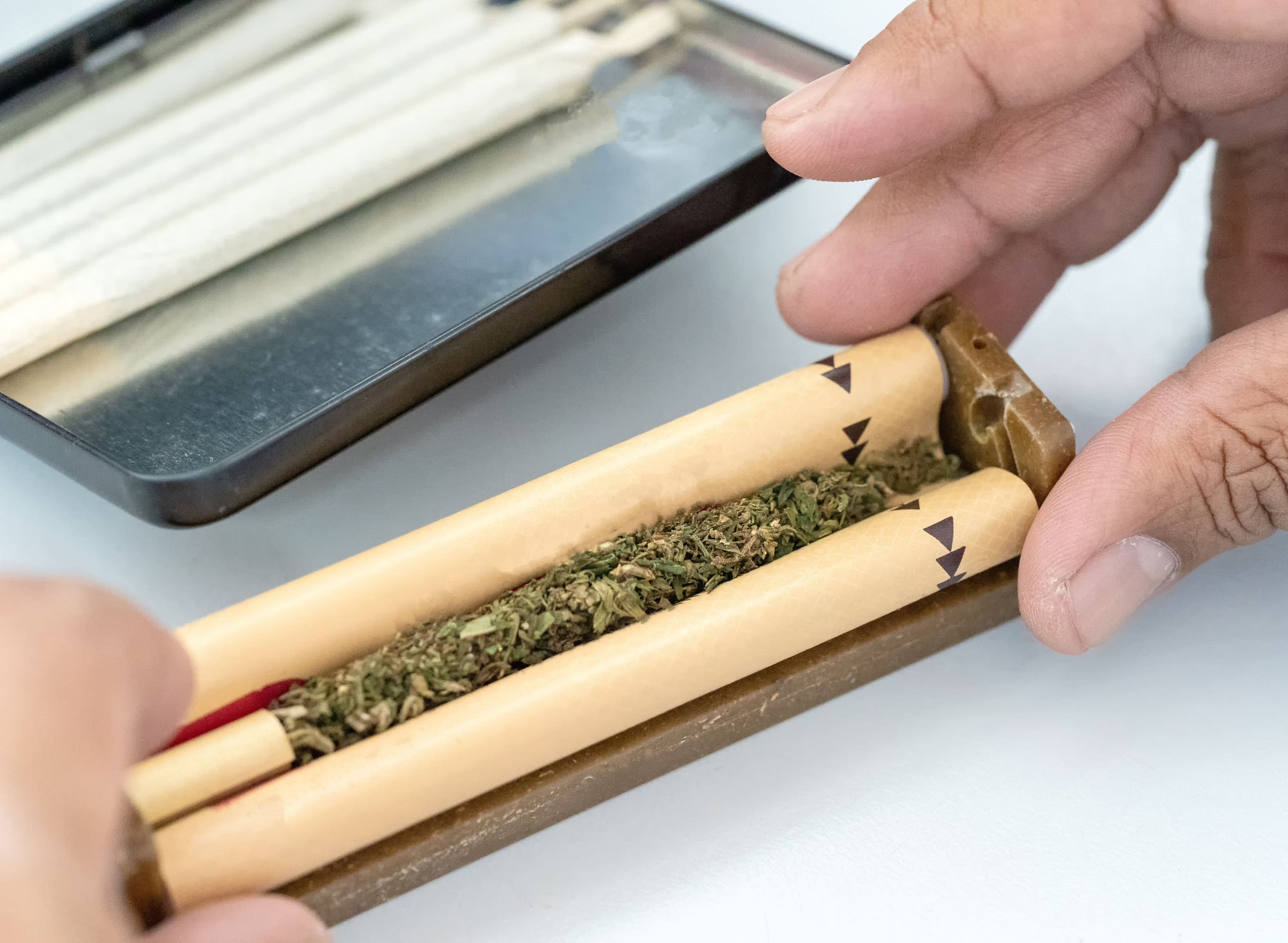
flower
The Ultimate Guide to RAW Hemp Plastic Rolling Machines
Table of Contents
Introduction to RAW Hemp Plastic Rolling Machines
Benefits of Using RAW Rolling Machines
Types and Sizes of RAW Rolling Machines
Step-by-Step Guide to Using RAW Rolling Machines
Maintenance and Care Tips
RAW Rolling Machines vs Alternatives
Maximizing Your Rolling Experience
nnThe Ultimate Guide to RAW Hemp Plastic Rolling MachinesnnRAW hemp plastic rolling machines have revolutionized the art of rolling by providing a simple, efficient way to create perfectly cylindrical cigarettes. These innovative devices combine the eco-friendly approach that RAW is known for with practical functionality that appeals to both beginners and experienced rollers. Whether you're new to rolling or looking to perfect your technique, understanding how to properly use a RAW hemp plastic cigarette rolling machine can significantly enhance your rolling experience.nnIntroduction to RAW Hemp Plastic Rolling MachinesnnRAW rolling machines are crafted from hemp plastic, aligning with the brand's commitment to sustainability. Unlike conventional plastic, hemp plastic is biodegradable and made from renewable resources. These compact devices feature two rolling aprons that work together to form perfectly cylindrical cigarettes with minimal effort. The machines come in various sizes to accommodate different preferences and are designed to work seamlessly with RAW hemp papers for an authentic rolling experience.nnBenefits of Using RAW Rolling MachinesnnConsistency and EfficiencynnOne of the primary advantages of using a RAW hemp plastic rolling machine is the consistency it provides. Each cigarette comes out uniform in shape and density, which can be difficult to achieve with hand-rolling, especially for beginners. This consistency ensures an even burn and optimal smoking experience.nnAccessibility for BeginnersnnFor those new to rolling, these machines offer a gentle learning curve. They eliminate the dexterity requirements of hand-rolling while still allowing users to participate in the rolling process. Many users start with a rolling machine before transitioning to hand-rolling techniques, as discussed in our guide on mastering RAW rolling techniques.nnTime-Saving SolutionnnWhen preparing multiple cigarettes, a rolling machine significantly reduces preparation time. This efficiency makes RAW rolling machines popular among those who roll frequently or in larger quantities.nnHighlight: RAW hemp plastic rolling machines combine eco-friendly materials with practical functionality, making them ideal for creating consistent, perfectly rolled cigarettes in less time.nnTypes and Sizes of RAW Rolling MachinesnnRAW offers several sizes of rolling machines to accommodate different preferences:nnn
70mm (1 ¼"): Perfect for standard cigarette sizesn
79mm (1 ½"): Slightly larger for a longer-lasting smoken
110mm (King Size): Creates longer cigarettes, popular for sharingn
120mm: The largest option for extra-long cigarettesnnnEach size works with corresponding RAW papers, ensuring a perfect fit every time. For a detailed breakdown of these options, check out our comprehensive guide to RAW rolling machine sizes.nnStep-by-Step Guide to Using RAW Rolling MachinesnnUsing a RAW hemp plastic cigarette rolling machine is straightforward once you understand the process:nnPreparationnnnOpen the rolling machine by pulling the aprons apartnPlace a RAW paper between the aprons with the gum line facing up and toward younDistribute your material evenly across the papernnnRolling ProcessnnnGently roll the aprons forward with your thumbs while holding the edges with your fingersnContinue rolling until only the gum strip is visiblenLick or moisten the gum stripnComplete one more full forward roll to seal the papernnnFinishing TouchesnnnOpen the machine and carefully remove your perfectly rolled cigarettenGently pack the ends if necessarynnnFor visual demonstrations and more detailed instructions, visit our guide on mastering the art of using a RAW rolling machine.nnMaintenance and Care TipsnnProper maintenance extends the life of your RAW rolling machine and ensures consistent performance:nnnKeep your machine clean by gently brushing away residue after each usenAvoid exposing the machine to extreme temperaturesnStore in a dry place to prevent warping of the hemp plasticnOccasionally apply a small amount of food-grade oil to the hinges if they begin to sticknnnWith proper care, a RAW hemp plastic rolling machine can last for years of regular use.nnRAW Rolling Machines vs AlternativesnnWhile RAW rolling machines are popular, it's worth considering how they compare to alternatives:nnPre-Rolled ConesnnFor those seeking even more convenience, pre-rolled cones eliminate the rolling process entirely. We offer a variety of options, including premium Futurola cones that provide a ready-to-fill solution with consistent quality and performance.nnOther Rolling Machine BrandsnnWhile several brands manufacture rolling machines, RAW stands out for its use of hemp plastic and commitment to sustainability. The quality of materials and design precision often results in a smoother rolling experience and more durable product.nnHand RollingnnTraditional hand rolling offers complete control over the process but requires practice to master. Many enthusiasts use rolling machines while developing their hand-rolling skills, as explained in our guide to RAW rolling machines.nnMaximizing Your Rolling ExperiencennTo get the most from your RAW hemp plastic rolling machine, consider these expert tips:nnnExperiment with different grind consistencies to find your preferred texturenTry various sizes of rolling machines to discover which best suits your needsnCombine with other RAW products like filters or tips for an enhanced experiencenConsider investing in multiple machines if you regularly roll different sizesnnnThe versatility of RAW rolling machines makes them valuable tools for anyone who appreciates the ritual of rolling. Whether you're a beginner seeking consistency or an experienced roller looking for efficiency, these hemp plastic devices offer an eco-friendly solution that honors the traditional rolling process while simplifying it for modern users.nnBy understanding the proper techniques and care for your RAW hemp plastic rolling machine, you'll be able to create perfectly rolled cigarettes with minimal effort and maximum enjoyment, continuing the tradition of rolling with a sustainable twist.
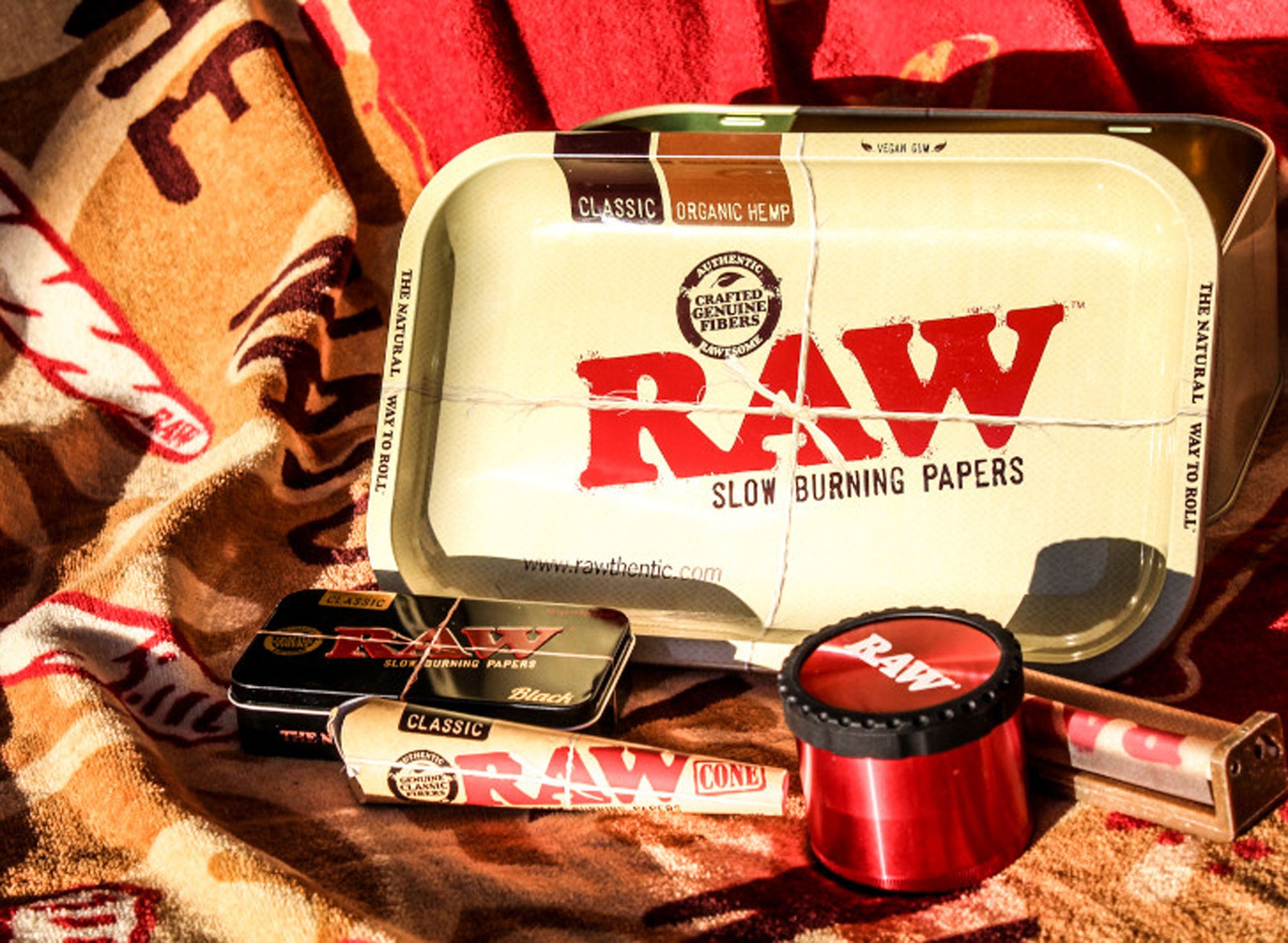
branding
Exploring the Official RAW Website: Your Guide to Online Access and Accessories
Table of Contents
Finding the Official RAW Website: Ensuring Authenticity
Navigating the RAW Online Experience: Key Features and Sections
RAW Accessories Available Through Official Channels
RAW Online Shopping: Tips for Purchasing Authentic Products
Authorized Retailers and Distribution Channels
The Future of RAW's Digital Presence and Product Innovation
Exploring the Official RAW Website: Your Guide to Online Access and AccessoriesFor enthusiasts of premium rolling papers and smoking accessories, the official RAW website serves as the definitive source for authentic products, brand information, and the latest releases. Navigating to the correct official RAW website ensures you're accessing genuine products rather than counterfeits that have unfortunately proliferated in the market.Finding the Official RAW Website: Ensuring AuthenticityThe official RAW website can be found at RawPapers.com, which serves as the brand's primary online presence. This official site is operated by RAW's parent company, HBI International, and provides direct access to information about their complete product lineup, company values, and authenticity verification tools.When searching for "RAW official site" or "RAW official website," be cautious of impostor websites that may appear in search results. The authentic site features the distinctive RAW branding, comprehensive product information, and official social media links to verified accounts.Navigating the RAW Online Experience: Key Features and SectionsThe RAW online experience is designed to showcase their extensive product range while educating visitors about the brand's commitment to natural, unrefined materials. Key sections of the official website typically include:
Product catalog featuring rolling papers, cones, and accessories
Store locator to find authorized retailers
Brand story and company values
Authenticity verification tools
Social media integration
Contact information for customer service
As detailed in this exploration of RAW's company structure and global presence, the brand maintains strict quality standards across all their official channels, including their website.Highlight: The official RAW website is the most reliable source for product information, authenticity verification, and locating authorized retailers of genuine RAW products.RAW Accessories Available Through Official ChannelsRolling Papers and Pre-Rolled ConesRAW's core products include their signature unbleached rolling papers and pre-rolled cones in various sizes. The extensive collection of RAW cones showcases the brand's commitment to natural, high-quality rolling products.Rolling Trays and StorageThe brand offers a wide range of rolling trays in different sizes and designs, from pocket-sized options to large collaborative artist editions. Storage solutions include bamboo stash boxes, tin containers, and specialized paper holders.Rolling Machines and GrindersRAW's mechanical innovations include various rolling machines designed to simplify the rolling process for users of all experience levels. Their grinder selection features durable materials and precision engineering, as detailed in this overview of RAW's grinding and rolling machines.RAW Online Shopping: Tips for Purchasing Authentic ProductsWhile the official RAW website primarily serves as an informational hub, actual purchasing typically happens through authorized retailers. For those looking to buy RAW products online, consider these tips:
Use the store locator on the official site to find authorized retailers
Verify seller authenticity before purchasing
Check for official RAW packaging and authentication features
Be wary of significantly discounted prices that seem too good to be true
For businesses looking to stock RAW products, proper presentation is key. Our premium pre-roll packaging solutions can help showcase these premium products while maintaining their quality and freshness.Authorized Retailers and Distribution ChannelsRAW products are distributed through a network of authorized wholesalers and retailers globally. The official website typically provides a store locator tool to help consumers find local and online shops that carry authentic RAW merchandise.As explained in this guide to finding RAW products online, authorized retailers will carry the full range of accessories, including special editions and limited releases. Physical RAW shops and authorized dealers are covered in detail in this comprehensive guide to RAW shops and stores.The Future of RAW's Digital Presence and Product InnovationAs the brand continues to evolve, the official RAW website will likely expand its features and content. Future developments may include:
Enhanced e-commerce capabilities for direct purchasing
Expanded educational content about product use and features
Virtual reality experiences showcasing manufacturing processes
Increased community features for RAW enthusiasts
Sustainability initiatives and environmental commitments
The RAW brand continues to innovate both in product development and digital presence, maintaining its position as an industry leader in natural rolling papers and accessories. By staying connected through the official RAW website, enthusiasts can keep up with the latest releases and brand developments while ensuring they're purchasing authentic products.For a deeper dive into the complete world of RAW products beyond what's featured on their official site, this comprehensive guide to RAW rolling papers and accessories provides additional insights into the brand's extensive catalog.

business tips
Alternative Materials and Composition of Joint Papers
Table of Contents
Traditional Joint Paper Composition
Safe Alternative Materials for Rolling Joints
Household Items That Can Substitute for Joint Papers
Materials to Avoid When Seeking Alternatives
Best Practices for Using Alternative Rolling Materials
Future Innovations in Rolling Materials
Understanding what joint paper is made of and what you can use as joint paper alternatives is essential knowledge for cannabis enthusiasts. Whether you've run out of rolling papers or are simply curious about different options, knowing the composition and alternatives can enhance your experience while ensuring safety.Traditional Joint Paper CompositionStandard rolling papers are typically made from plant-based materials processed into thin sheets. The most common compositions include:
Wood Pulp: Traditional papers often contain wood pulp processed to create thin, burnable sheets. These papers may contain chemicals from the bleaching process.
Rice: Rice papers burn slowly and produce minimal ash. They're made from processed rice and often contain fewer additives than wood pulp varieties.
Hemp: Made from cannabis plant fibers, hemp papers are popular for their sustainable sourcing and complementary burning properties. As detailed in this guide to buying the best joint papers, hemp papers often burn more evenly than alternatives.
Flax: Flax papers offer a natural alternative with minimal processing, appealing to those seeking cleaner options.
Most quality papers also contain natural gum arabic as an adhesive strip, allowing the paper to be sealed when rolled. Some specialty papers may include flavoring agents or colorings, though purists often prefer unbleached, additive-free options.Safe Alternative Materials for Rolling JointsWhen wondering what you can use as joint paper in a pinch, several viable alternatives exist:Corn HusksDried corn husks have been used traditionally in many cultures. They're natural, provide a mild flavor, and burn relatively slowly. To prepare:
Clean and dry the husk thoroughly
Trim to appropriate size
Rehydrate briefly before rolling to increase flexibility
Rose PetalsRose petals offer a fragrant, flavorful alternative. According to this resource on creative rolling alternatives, rose petals can be lightly toasted to create a pliable, smokable wrapper.Highlight: When selecting alternative materials for joint rolling, prioritize natural, untreated plant materials that haven't been exposed to pesticides or chemicals.Household Items That Can Substitute for Joint PapersCommon household items can serve as emergency substitutes when considering what you can use for joint paper:Bible PagesThe thin pages of a Bible (particularly the blank ones) have historically been used as rolling paper substitutes. While effective due to their thinness and burning properties, this practice may be considered disrespectful by many.Receipt PaperThough not ideal due to potential chemical coatings, thermal receipt paper can work in emergencies. However, most experts recommend avoiding this option when possible due to potential toxins.Cigarette PapersEmpty cigarettes can be carefully split and emptied, with the paper repurposed for rolling. This provides a ready-made paper with filter, though cigarette papers often contain additives.For those concerned about safety when using alternative materials, proper safety containers with child-resistant features are essential for storing both your herbs and your rolling supplies, especially in households where children might be present.Materials to Avoid When Seeking AlternativesNot all thin papers or materials are suitable substitutes when investigating what joint paper is made of or what alternatives exist:
Magazine/Glossy Paper: Contains inks and chemicals that release toxins when burned
Colored Paper: Dyes can release harmful compounds
Treated Papers: Papers with chemicals, coatings, or fragrances should be avoided
Aluminum Foil: Releases aluminum particles when heated, potentially harmful to lungs
Notebook Paper: Too thick and contains chemicals from processing
Understanding what materials to avoid is just as important as knowing what can be used safely. As explained in this comprehensive guide on rolling and smoking joints, material selection significantly impacts both experience and safety.Best Practices for Using Alternative Rolling MaterialsWhen using alternative materials for joint rolling, follow these guidelines:Preparation TechniquesMost natural alternatives benefit from proper preparation:
Ensure materials are thoroughly dried before use
Cut to appropriate size and shape
Consider a light toasting to improve pliability
Test burn a small piece to check for unusual odors or smoke
Rolling ConsiderationsAlternative materials may require adjusted rolling techniques:
Use a filter/crutch to provide structure
Roll more loosely than with traditional papers
Consider using honey or fruit juice as natural adhesives
Practice with the material before adding valuable herbs
For detailed techniques on rolling with alternative materials, this ultimate guide to rolling joints provides valuable insights for various styles and materials.Future Innovations in Rolling MaterialsThe cannabis accessory market continues to evolve, with new rolling materials emerging:
Biodegradable Options: Environmentally conscious papers that decompose quickly
Hemp-Cellulose Hybrids: Combining the benefits of multiple plant fibers
Organic Certification: Papers certified free from pesticides and harmful chemicals
Functional Additives: Papers infused with CBD or terpenes for enhanced effects
As consumer awareness grows regarding what joint paper is made of, manufacturers are responding with cleaner, more sustainable options. For those who prefer not to roll at all, pre-rolled cones and automated rolling devices provide convenient alternatives to traditional rolling papers.Whether you're seeking emergency substitutes for what you can use as joint paper or simply exploring options beyond traditional papers, understanding material composition and safety considerations ensures the best possible experience. When in doubt, natural, unprocessed plant materials typically offer the safest alternatives to commercial rolling papers.

flower
Step-by-Step Guide to Rolling a Cross Joint
Table of Contents
What Is a Cross Joint and Why It's Popular
Supplies Needed for Rolling a Cross Joint
Step-by-Step Guide to Rolling a Cross Joint
Common Mistakes and Troubleshooting
Advanced Techniques and Variations
Mastering the Craft: Taking Your Cross Joint Skills Further
Rolling a cross joint is an advanced cannabis rolling technique that creates an impressive smoking experience. Made famous by popular culture, this distinctive joint resembles a cross or plus sign and burns from multiple points simultaneously. While it may look complicated, learning how to roll a cross joint is achievable with practice, patience, and the right guidance.What Is a Cross Joint and Why It's PopularA cross joint consists of two joints intersecting to form a cross shape, with one joint passing through a hole in the larger, primary joint. This design allows for multiple lighting points and creates a unique smoking experience that's both visually impressive and functionally interesting.The cross joint gained significant popularity after appearing in films and being showcased by cannabis enthusiasts. Beyond its novelty appeal, many enjoy the cross joint for special occasions or as a way to demonstrate rolling prowess. As our guide to rolling different joint styles notes, specialty joints like the cross joint have become symbols of creativity in cannabis culture.Supplies Needed for Rolling a Cross JointBefore attempting to roll a cross joint, gather these essential supplies:
Cannabis flower (1-2 grams, depending on desired size)
3 rolling papers (2 standard size, 1 king size)
Grinder
Small poking tool (like a toothpick or paperclip)
Scissors
Filter tips (optional but recommended)
Storage container for later use
Quality supplies make a significant difference in your results. For storing your finished creation, durable mylar storage bags can help preserve freshness if you're making cross joints ahead of time for an event or special occasion.Step-by-Step Guide to Rolling a Cross JointPart 1: Rolling the Main Joint1. Grind your cannabis to a medium consistency.2. Take your king-size rolling paper and create a filter tip if desired.3. Fill the paper with ground cannabis, distributing it evenly.4. Roll the paper between your fingers to shape the cannabis into a cylinder.5. Tuck the unglued side of the paper over the cannabis and roll upward.6. Lick the glue strip and seal the joint, twisting both ends to secure the cannabis inside.7. This main joint should be thicker than usual, as you'll need to create a hole through it.Highlight: The main joint in a cross joint needs to be rolled slightly thicker than normal to maintain structural integrity after you create the hole for the cross piece.Part 2: Creating the Cross Piece1. Using a standard-size paper, roll a thinner joint following the same basic technique.2. This joint should be significantly thinner than your main joint.3. Seal it well and twist both ends.4. Using your poking tool, carefully create a hole through the center of your main joint. Work slowly to avoid tearing the paper.5. The hole should be just large enough for your cross joint to fit through.Part 3: Assembling the Cross Joint1. Carefully insert the thinner joint through the hole in the main joint.2. Position it so that equal lengths extend from both sides of the main joint.3. Take your third rolling paper and cut it into strips.4. Wrap these strips around the intersection point, using the gum edge to seal.5. These reinforcement strips are crucial for proper airflow and structural integrity.6. Lick and seal these strips carefully around all connection points.7. Allow a moment for the gum to dry and strengthen the connection.Common Mistakes and TroubleshootingWhen learning how to make a cross joint, several common issues might arise:
Hole too large: If the hole in your main joint is too big, the cross piece won't seal properly, causing air leaks.
Weak intersection: Insufficient reinforcement at the crossing point can cause structural failure when smoking.
Uneven burning: If one arm burns faster than others, it may indicate uneven packing or airflow issues.
As our beginners' guide to rolling emphasizes, patience is key. Don't be discouraged if your first few attempts aren't perfect. Each attempt improves your technique.Advanced Techniques and VariationsOnce you've mastered how to roll the cross joint in its basic form, consider these variations:
Double Cross: Create a more complex structure with two crossing joints through the main one.
Colored Papers: Use different colored papers for visual effect.
Flavored Papers: Incorporate flavored papers for added taste dimensions.
Size Variations: Experiment with different sized papers for mini or jumbo cross joints.
Advanced rollers might also experiment with incorporating concentrates or creating a mix of different strains in each arm of the cross. For more creative ideas, check out our guide on creative rolling alternatives.Mastering the Craft: Taking Your Cross Joint Skills FurtherRolling a cross joint is more than just a smoking method, it's a craft that demonstrates patience and dexterity. As you continue to practice how to roll cross joints, you'll develop your own techniques and preferences.Consider documenting your progress and sharing techniques with fellow enthusiasts. Many find that teaching others helps refine their own skills. Additionally, understanding the proper techniques for smoking and preserving joints will help ensure your creation delivers the experience you intended.Remember that the goal isn't just to create something that looks impressive but also functions well. A properly rolled cross joint should burn evenly and provide a smooth smoking experience from start to finish.With practice, patience, and the right supplies, you'll be rolling cross joints that are both functional and visually stunning, perfect for special occasions or whenever you want to elevate your cannabis experience.


